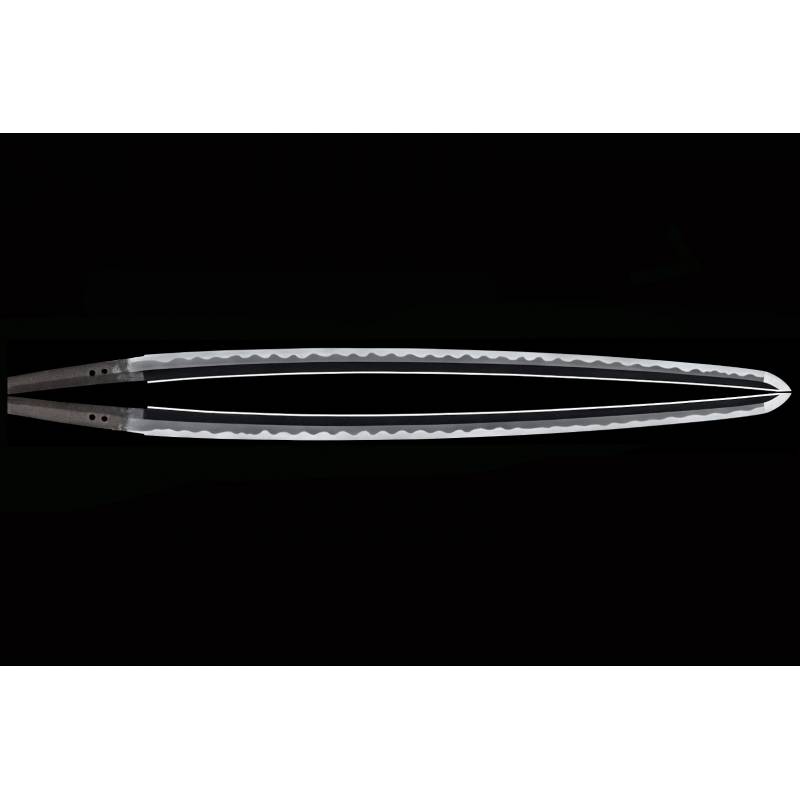













This koto nihonto (old sword) is more than 500 years old and comes from the muromachi period, what an honor to sell such a great Japanese katana.
Sold
This authentic Japanese Katana is dedicated to the Sue Bizen school and of course comes from the province of Bizen. In the Bunmei era (1469 - 1487), there were very prominent smiths working at that time who provided the samurai with weapons.
In this Sue Muromachi period beautiful Nihonto were forged and they also called this the golden period of Bizen. Also in the Shinto and Shinshinto period, the Bizen (備 前) province was known for forging katana, but the high quality of forging never reached the height again as in the late Muromachi period.
This Bizen school made Nihonto with a curve that was designed so drawing the katana went quickly and smoothly. The Sengoku Jidai (戰国 時代) period from the late Muromachi was one in which there was much combat between feudal warlords or Daimyo in which they fought for power. A daimyō (大名) belonged to the samurai class.
This hand-forged Japanese Nihonto is still in excellent condition despite the age and has a strong appearance. The blade has a durable itama and masame hada and the grain structure is very clearly visible. Of course made from tamahagane with an appealing Jitesu. Due to the very high temperature for quenching or tempering, you see that groups of martensite change to Ji or Ji-ni, this is prominent. The basis of the choji hamon is ko-gunome and midare and you see many ashi and yo, so it contains a lot of activity or hataraki and will not get bored easily. The nihonto from the Bizen province were known for their sharp and strong constructions due to the relatively high shinogi which was a requirement for the samurai in these rough times.
The nakago has 2 Mekugi-Ana, a dynamic Sori in Shinogi Zukuri style blade and very good balance.
This Japanese Katana has a very nice Koshirae. A round iro tsuba in sukashi like in the owari school. The iron tsuba is covered with black urushi. Black ito and qualitative same gawa of white ray skin. The fuchi and kashira are made of urushi iron with plant design. The menuki is made of copper and shows a shishi lion dog, which were known for their protective effect. Equipped with a black roiro saya with wavy pattern.
Nagasa : 68,6 cm
Sori :1.2 cm
Width at the hamachi :2,91 cm
Width at the Kissaki : 2,18 cm
Kasane : 6 mm
This Japanese Katana is authentic, and the matching NBTHK Hozon papers attesting the quality and authenticity. The Shinsa took place in march, the results is known now, and the paper will shipped in august.
Inclusive whole Oshigata. Oshigata is used by Japanese appraisers since before the Japanese middle ages, to record all the metallurgical activities in the steel of a Japanese sword that make it unique to any other sword.
This is an antique sword (more than 500 years old) and is therefore subject to the test of time and this will therefore be visible in some spots.
When handling a Katana, one should consider the following few tips:
Never touch the blade with bare skin! If the need arises for handling the blade, be sure to use a silk cloth. Only handle the munesuji. One may do this, by holding the tsuka in one hand and resting the munesuji on the silk cloth with the other hand. When viewing the sword the blade (Hasaki) should face upwards.
During handling of a katana, avoid breathing or talking directly over the blade! Moisture may cause blemishes or pitting on the steel surface.
Never place the sword on its point (kissaki)
During exchanges, or passing of a katana from one person to another, do not point the blade's tip at the person receiving the sword, nor have the blade(Hassaki) facing upwards.
Before passing a katana to another person, it is best to cover the blade with its saya!